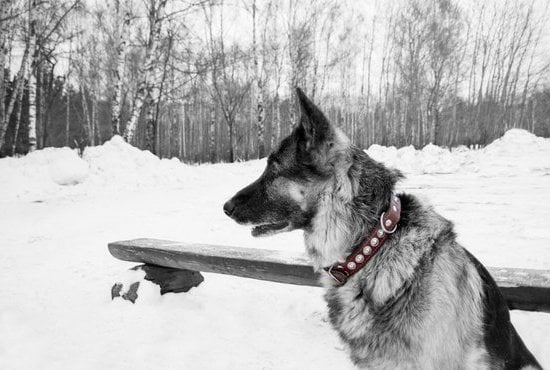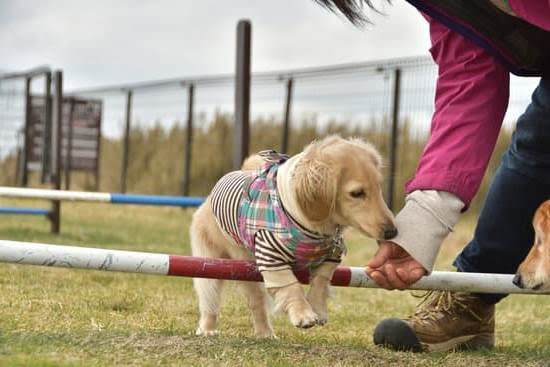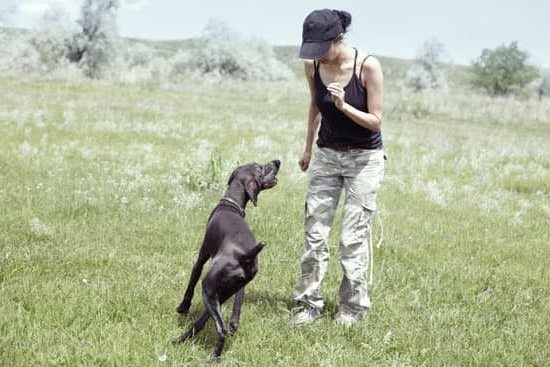Autism is a complex neurodevelopmental disorder that affects communication, behavior, and social interaction. Many individuals with autism find comfort, companionship, and support from specially trained service dogs. In this article, we will explore how to train an autism service dog to provide assistance and companionship to individuals living with autism.
Individuals with autism often struggle with social interactions, sensory issues, and emotional regulation. An autism service dog can be trained to provide support in navigating these challenges, such as offering deep pressure therapy during moments of anxiety or providing a calming presence in overstimulating environments. This dedicated and trained animal plays a crucial role in enhancing the quality of life for people with autism.
Training an autism service dog requires patience, dedication, and understanding of the unique needs of individuals on the autism spectrum. The process involves selecting the right dog for the job, building a strong bond between the dog and their handler, basic obedience training, specialized behaviors related to autism support, public access training, and ongoing maintenance of both training and well-being.
Throughout this article series, we will delve into each aspect of training an autism service dog to provide comprehensive guidance for those interested in pursuing this valuable form of support.
Selecting the Right Dog for Autism Service
When selecting the right dog for autism service, it is crucial to consider the specific needs and requirements of the individual with autism. Different individuals may have different sensitivities and preferences when it comes to the characteristics of a service dog. For example, some individuals with autism may benefit from a larger, more sturdy dog that can provide deep pressure therapy, while others may prefer a smaller, more easily manageable dog.
It is also important to consider the energy level and temperament of the dog. A good candidate for an autism service dog should be calm, patient, and gentle, as well as responsive to training. These dogs will need to be able to handle a variety of environments and situations without becoming nervous or agitated. Additionally, the breed of the dog should be taken into account as some breeds are better suited for service work than others.
One crucial aspect of selecting the right dog for autism service is working with an experienced and reputable service dog organization or trainer. These professionals can help assess the needs of the individual with autism and match them with a suitable candidate.
They can also provide guidance on how to train autism service dogs and ensure that the selected dog has the potential to become a successful service animal. Finding the right fit is essential in ensuring that both the individual with autism and the service dog can build a strong bond and work effectively together as a team.
Building a Bond With Your Service Dog
Building a strong bond with your autism service dog is essential for a successful partnership. This bond goes beyond the typical relationship between a pet and its owner; it is one based on trust, communication, and understanding. Here are some tips on how to strengthen the bond with your autism service dog:
- Spend quality time together: Engage in activities that allow you and your dog to bond, such as grooming, playing, training sessions, or simply relaxing together. Quality time spent together will help build trust and affection between you and your service dog.
- Understand your dog’s needs: Just as you expect your service dog to understand and respond to your needs, it’s important for you to understand what your dog requires to be happy and healthy. This includes providing proper care, nutrition, exercise, and mental stimulation.
- Use positive reinforcement: Positive reinforcement is crucial in building a strong bond with your autism service dog. Rewarding good behavior with treats, praise, or playtime will create a positive association in your dog’s mind and strengthen the bond between you.
By following these tips and taking the time to build a strong connection with your autism service dog, you can enhance the effectiveness of their training and support their role in helping individuals with autism spectrum disorder navigate daily life. The stronger the bond between you and your service dog, the more effective they will be at fulfilling their duties and providing companionship.
Basic Obedience Training for Autism Service Dogs
Foundation of Obedience Training
The foundation of training for autism service dogs begins with basic obedience. This involves teaching the dog to respond to commands such as sit, stay, come, and heel. These commands are essential for ensuring that the service dog can effectively assist their handler in various situations.
Socialization and Desensitization
Socialization and desensitization are crucial aspects of basic obedience training for autism service dogs. It is important for the dog to be comfortable and well-behaved in various environments and around different people. Exposing the dog to different situations, people, and animals helps them to become more adaptable and confident in their role.
Positive Reinforcement Techniques
Positive reinforcement techniques are highly effective when training autism service dogs. Using treats, toys, or praise to reward desired behaviors helps the dog to understand what is expected of them. Consistency and patience are key when using positive reinforcement methods to train an autism service dog.
Specialized Training for Autism Service Dogs
Autism service dogs undergo specialized training to assist individuals with autism in various ways. From providing comfort and emotional support to helping with sensory overload, these dogs play a crucial role in the lives of their handlers. This section will delve into the different aspects of specialized training for autism service dogs and the important role they play in the lives of individuals with autism.
Understanding Sensory Support
One of the key components of training an autism service dog is to provide sensory support to individuals with autism. This type of training involves teaching the dog how to recognize and respond to sensory overload or meltdowns experienced by their handlers. This can include providing deep pressure therapy, interrupting repetitive behaviors, or alerting the individual or their caregiver when they sense distress or discomfort.
Developing Social Skills
Another important aspect of specialized training for autism service dogs is helping individuals with autism develop their social skills. These dogs are trained to facilitate social interactions and help in reducing anxiety in social settings by providing a calming presence. They can also be taught to encourage communication and interaction with others, which can be particularly beneficial for children with autism.
Assisting With Daily Tasks
In addition to providing emotional support and sensory assistance, autism service dogs can also be trained to help with daily tasks. This can include picking up dropped items, leading the individual away from potentially dangerous situations, or even finding help when needed. By being trained in these specific tasks, these dogs become valuable companions that greatly improve the quality of life for individuals with autism.
Overall, specialized training for autism service dogs is a multifaceted process that involves teaching these animals how to respond effectively to the unique needs and challenges faced by individuals with autism. By understanding the complexities of this specialized training, it becomes evident just how impactful these animals are in enhancing the lives of those they serve.
Recognizing and Responding to Autism-Related Behaviors
Autism service dogs play an essential role in recognizing and responding to autism-related behaviors in individuals with autism spectrum disorders. These dogs are trained to provide assistance and support to help manage the unique challenges that individuals on the autism spectrum may face. Understanding how to train autism service dogs to recognize and respond to these behaviors is crucial in ensuring that they can effectively assist their human companions.
One important aspect of training an autism service dog is teaching them how to recognize signs of distress or agitation in their human companion. This includes being able to identify repetitive behaviors, sensory overload, or emotional meltdowns. Through specialized training, these dogs can learn to notice subtle changes in behavior and body language, allowing them to intervene and provide comfort or assistance when needed.
In addition to recognizing distress signals, autism service dogs are also trained to respond appropriately to these behaviors. This may involve providing deep pressure therapy during a meltdown, guiding their companion away from overwhelming stimuli, or even fetching help if necessary. By understanding the specific needs of individuals on the autism spectrum and providing targeted training, these service dogs can become invaluable partners in promoting safety and well-being for their human companions.
| Behavior | Response |
|---|---|
| Repetitive Behaviors | Provide distraction or redirect attention |
| Emotional Meltdown | Offer deep pressure therapy or physical support |
| Sensory Overload | Guide away from overwhelming stimuli |
Public Access Training for Autism Service Dogs
Training an autism service dog to behave appropriately in public settings is crucial to ensure that the dog can assist their handler effectively and safely. Public access training involves teaching the service dog to remain calm and focused in various environments, as well as to follow commands even when faced with distractions. Here are some important aspects of public access training for autism service dogs:
1. Exposure to different environments: It’s essential to expose the service dog to a wide range of environments they may encounter while assisting their handler. This includes busy streets, crowded areas, public transportation, and other places where the dog must remain focused on their handler and perform their tasks effectively.
2. Good behavior around people and other animals: During public access training, the autism service dog should learn how to behave appropriately around people and other animals. This includes remaining calm and not reacting aggressively or anxiously, as well as being comfortable in close proximity to strangers and other pets.
3. Practicing obedience commands in real-life situations: The dog should be able to follow basic obedience commands such as sit, stay, heel, and come reliably in various public settings. This is essential for maintaining control over the dog in any situation, ensuring the safety of both the handler and those around them.
By focusing on these aspects of public access training for autism service dogs, handlers can ensure that their canine companion is well-prepared to assist them in any public setting effectively.
Remember that patience and consistency are key when training your autism service dog for public access. Utilizing positive reinforcement techniques and seeking professional guidance can also greatly contribute to your success in this phase of training.
Maintaining the Training and Well-Being of Your Autism Service Dog
Once your autism service dog has completed its training, it is important to remember that training should not stop there. Just like any other dog, ongoing training and maintenance are crucial for keeping your service dog well-equipped to assist individuals with autism. This includes regular practice of commands and tasks learned during training, as well as continued socialization with people and other animals.
It is also essential to prioritize the overall well-being of your autism service dog. This includes providing proper nutrition, regular exercise, grooming, and veterinary care. Regular visits to the veterinarian can help ensure that your service dog remains healthy and fit for duty. It is also important to make sure that your service dog’s vaccinations are kept up to date.
Moreover, it is crucial to continue the bond between you and your autism service dog beyond training. Regular playtime, positive reinforcement, and affection are all important in maintaining a strong bond with your service dog. This ongoing bond will not only enhance the working relationship between you and your service dog but also contribute to the emotional well-being of both of you.
| Maintenance | Well-Being |
|---|---|
| Regular practice of commands | Proper nutrition and exercise |
| Continued socialization | Grooming and veterinary care |
| Bond enhancement through playtime | Affection for emotional well-being |
Benefits of Having an Autism Service Dog in the Family
In conclusion, having an autism service dog in the family can provide numerous benefits for individuals with autism and their loved ones. These specially trained dogs play a crucial role in providing support, companionship, and safety for those living with autism. By understanding the unique role of an autism service dog and selecting the right companion, families can greatly improve the quality of life for their loved ones with autism.
Building a strong bond with the service dog is essential, as it forms the foundation for successful training and collaboration. Basic obedience training lays the groundwork for effective communication and control, while specialized training equips the dog to respond to specific needs and behaviors associated with autism. Recognizing and responding to autism-related behaviors is a key skill that an autism service dog must acquire through targeted training.
The process of public access training ensures that the service dog is well-behaved and reliable in various public settings, allowing individuals with autism to enjoy greater freedom and independence. Lastly, maintaining the ongoing training and well-being of the autism service dog is vital to ensure its continued effectiveness in providing support.
Overall, the benefits of having an autism service dog in the family are immense, making it a worthwhile investment for enhancing the overall well-being and quality of life for individuals living with autism.
Frequently Asked Questions
Are Service Dogs Effective for Autism?
Service dogs can be very effective for autism as they are trained to support individuals with autism in various ways. They can help reduce anxiety, provide companionship, and even assist with tasks such as interrupting repetitive behaviors.
Can You Train a Dog to Help With Autism?
Yes, it is possible to train a dog to help with autism. There are specific training programs available that are designed to teach dogs how to support individuals with autism. These programs focus on training the dog to respond to the unique needs of people on the autism spectrum.
What Is the Best Dog to Train for Autism?
The best dog to train for autism depends on the individual’s specific needs and preferences. Generally, dogs that are calm, patient, and have a gentle nature tend to be well-suited for supporting individuals with autism. Breeds like Golden Retrievers, Labradors, and Standard Poodles are often chosen for their ability to be trained effectively and their gentle demeanor.

Welcome to the blog! I am a professional dog trainer and have been working with dogs for many years. In this blog, I will be discussing various topics related to dog training, including tips, tricks, and advice. I hope you find this information helpful and informative. Thanks for reading!





